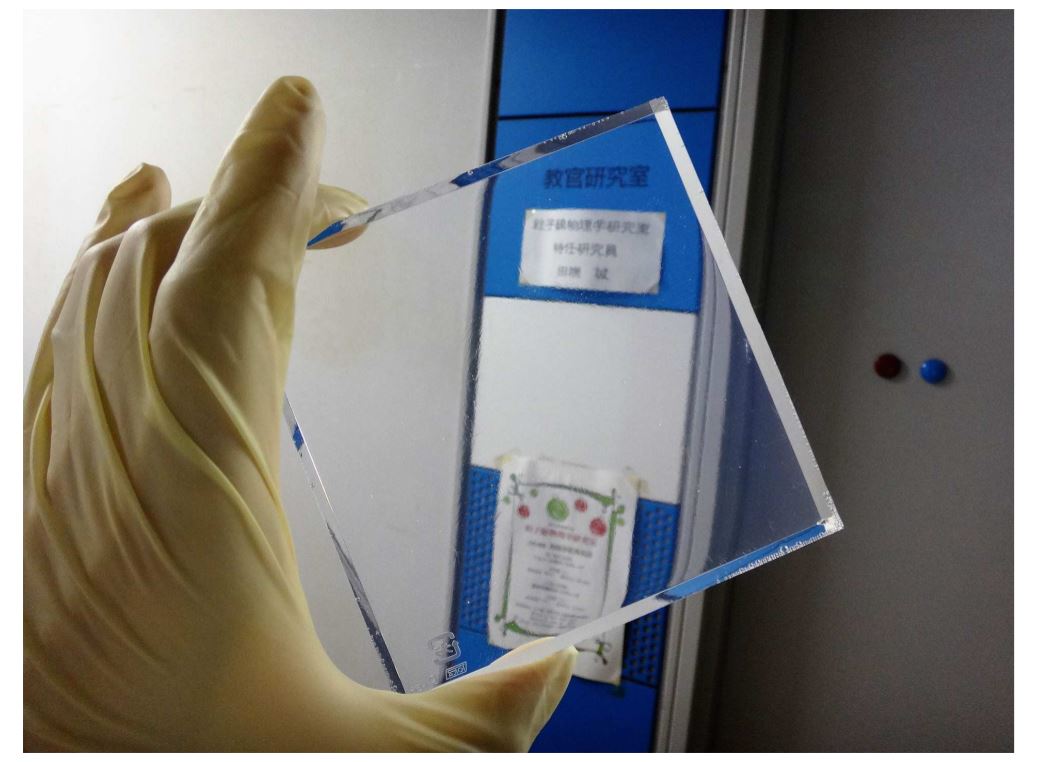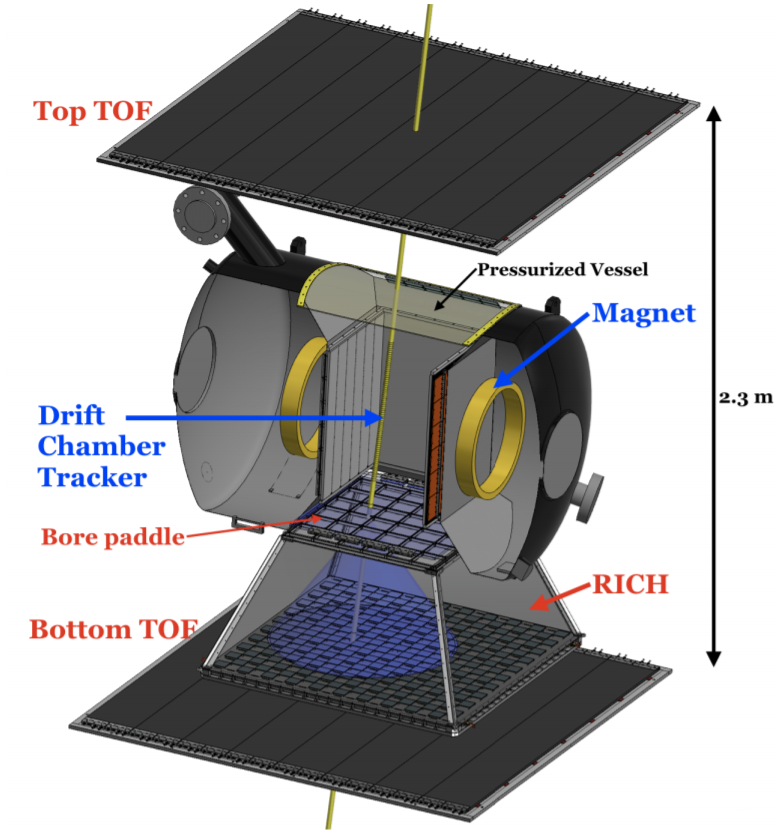Ring Imaging CHerenkov (RICH) detector
RICH detectors utilize the velocity dependence of the emission angle of Cherenkov radiation, to accurately measure relativistic charged particle velocities. The main components of a RICH detector are a radiator assembly to produce the Cherenkov light and a detector plane to image the resulting ring.
The HELIX RICH comprises a radiator plane and a detector plane separated by an expansion volume. The radiator plane is made up of 32 tiles of aerogel, with nominal refractive index of 1.16, and four tiles of NaF with index 1.33. All tiles are 10x10x1 cm3. The detector plane is populated with 6x6 mm2 silicon photomultipliers (SiPMs) arranged in 8x8 arrays. There are 200 such arrays in a checkerboard pattern on a 100 x 100 cm2 surface located 50 cm below the radiator plane.

A rendering of the HELIX RICH showing the Cherenkov cone generated by the passage of a charged particle.

A photograph of an aerogel tile, produced at Chiba University.
